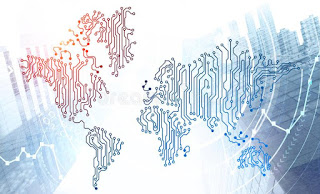Artifical Intelligence (AI) as An Efficient Driver of Development in Latin America and Caribbean
The critical infrastructure sectors in Latin America and the Caribbean (LAC) face growing challenges that threaten their efficiency and sustainability. Roads, power grids, water systems and public transportation networks show signs of aging and obsolescence, increasing maintenance costs and reducing the quality of services.
Against this backdrop, the Inter-American Development Bank (IDB) is exploring how artificial intelligence (AI) can be applied to infrastructure. For example, in public transportation, route optimization algorithms are helping reduce travel times and congestion. In water and sanitation, predictive models make it possible to detect leaks and anticipate outages in distribution networks. In energy, AI is used to forecast demand and facilitate the integration of renewable energy at scale.
These advances and lessons are covered in the IDB’s publication “AI from the Ground Up: Challenges and Opportunities in the context of Latin America and the Caribbean”, which presents real-world cases, recommendations, and practical guidelines on how AI can become a key tool to strengthen the region’s critical infrastructure.
Challenges for Our Infrastructure
Infrastructure in the region faces challenges such as aging physical structures, accelerated urbanization, population growth, and the impact of climate events. The consequences include disruptions in essential services and rising costs of use, which lead to unequal access.
However, technology can help reverse these trends. IDB estimates suggest that a 15% reduction in infrastructure service costs through the efficient use of digital technologies could increase the GDP of Latin America and the Caribbean by 6% over the next 10 years.
How AI Can Make a Difference in Infrastructure
Although more than 40% of public agencies in transportation and energy in LAC lack a clear digital transformation strategy, any entity can implement AI-based projects. In critical infrastructure sectors, the implementation of machine learning models is already within reach for many governments and organizations.
Some concrete examples show this potential in the region across three areas:
- Energy: AI systems predict consumption patterns and help balance supply and demand, facilitating the integration of intermittent renewable energies such as solar and wind.
- Water and sanitation: Predictive models supported by smart sensors allow detection of invisible leaks and anticipation of pipe ruptures, reducing water losses and maintenance costs.
- Transportation: Traffic optimization algorithms help reduce congestion and improve route efficiency in urban public transport.
Effective AI Adoption
The report offers the following recommendations to unlock AI’s potential in critical infrastructure sectors:
- Adopt agile methodologies that include proof of concepts, prototypes, and minimum viable products. These tools make it possible to experiment with AI-based solutions before scaling them.
- Establish organizational structures that drive AI adoption, ensuring that teams have the necessary technical skills.
- Data quality determines the success of AI projects. Building high-quality data requires identifying sources, designing efficient data flows, and ensuring adequate architectures for storage and processing.
- Evaluate infrastructure requirements from the outset, especially storage and computing capacities needed for AI models.
- Ensure that AI models address specific and measurable problems, based on data quality, computing capacity, explainability, and performance.
- Incorporate ethical principles from the design stage, addressing privacy, security, and transparency to build trust in solutions.
AI as a Driver of Development
We invite you to explore these recommendations in detail in “AI from the Ground Up: Challenges and Opportunities in the context of Latin America and the Caribbean.”


